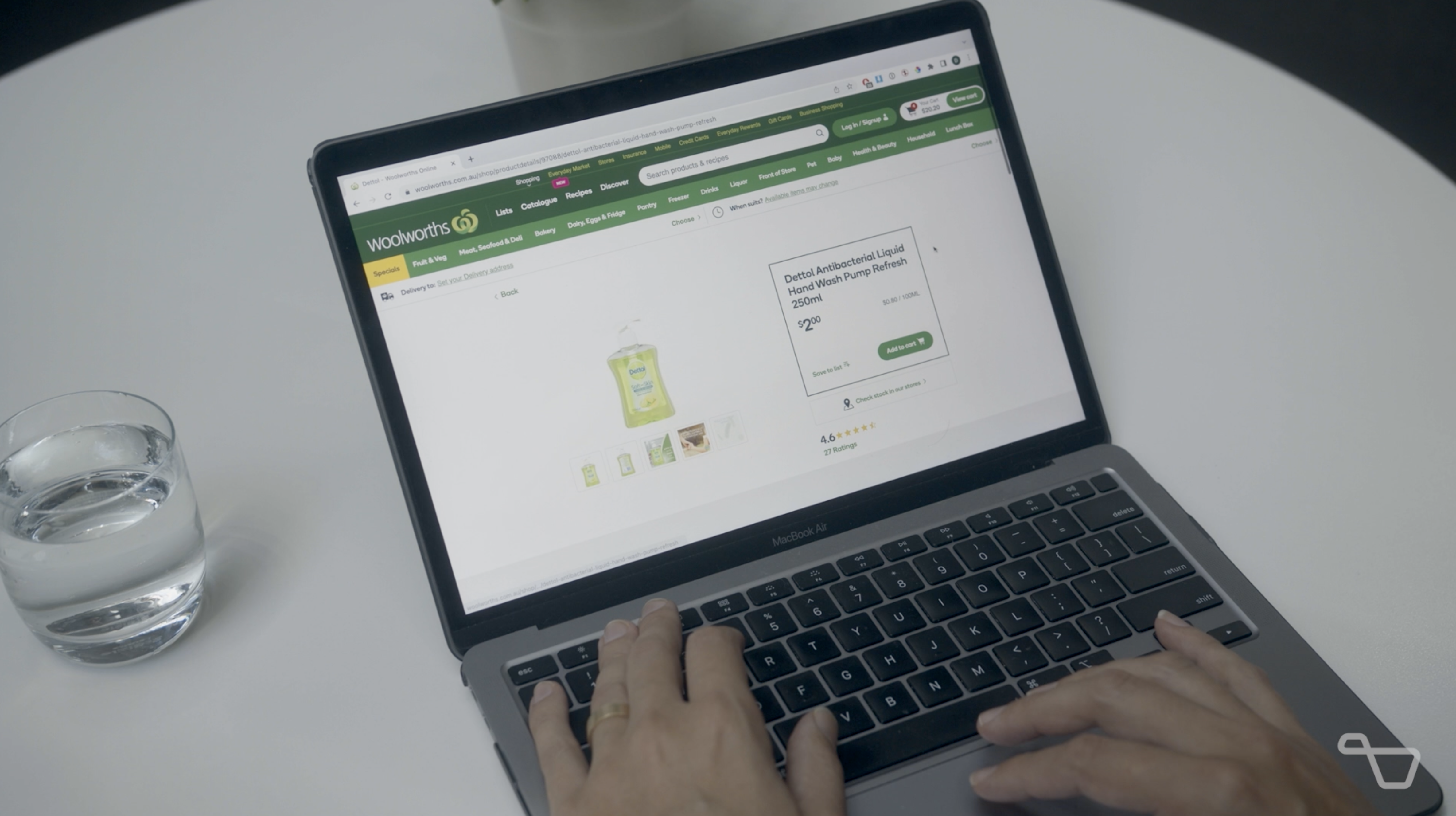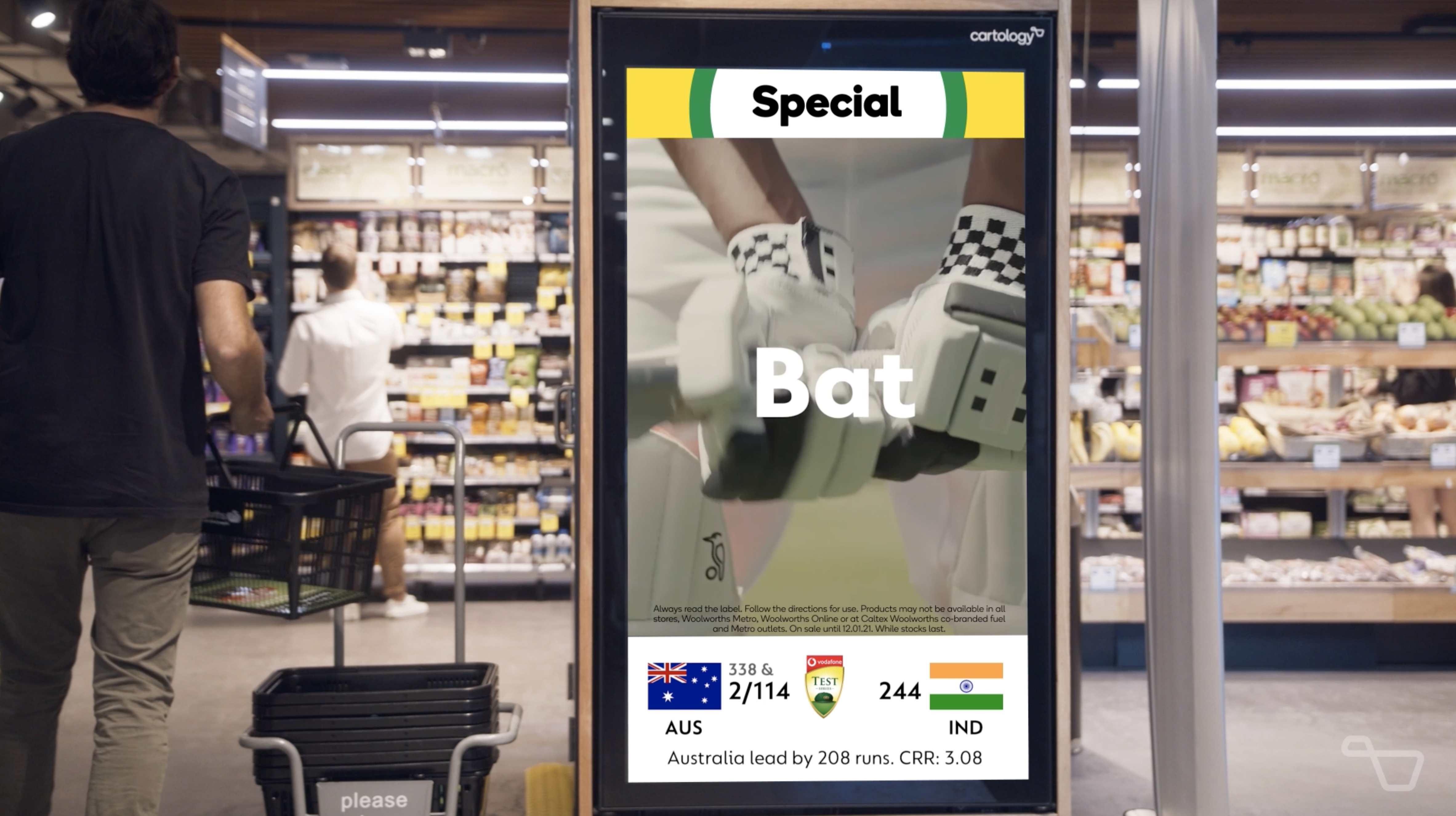Omnichannel, the new retail media frontier: Reckitt’s Dettol sales surge 200%, showing FMCG marketers how to clean up; while marketing teams structure for e-commerce

As customer demands and shopping behaviour continues to change, brands need to be with them at every step of that journey.
Reckitt rethought the role of retail media and saw Dettol sales triple – bowling even peak COVID sales over. Now the FMCG giant, alongside the likes of Nestlé, Goodman Fielder, and Colgate Palmolive, are structuring marketing teams and recalibrating strategies and budgets to harness the “exponential growth” enabled by retailers bringing together media, shoppers and data – on and offline.
What you need to know
- The omnichannel shopper, who seamlessly blends online and in-store shopping, is here and growing – and they expect brands to show up on their shopping journey.
- As e-commerce continues to surge, m-commerce – or mobile commerce – is growing even faster, with sales reaching $11billion in 2021 and predicted to make up 43 per cent of e-commerce by 2025.
- In response, brands such as Reckitt, Nestle, Goodman Fielder and Colgate Palmolive, are structuring marketing teams for e-commerce organisational readiness signalling the emergence of dedicated omnichannel and e-commerce specialist teams.
- Reckitt brand Dettol has successfully leveraged the power of omnichannel in a retail media campaign that increased its total sales by 200 per cent, with more than 54 per cent new to brand customers in-store – its best results.
- Reckitt says retail media allows it to drive smarter, targeted, customer-first strategies that demonstrate true effectiveness at key moments on a shopper’s journey.
Building on omnichannel growth
It is now proven that Australians have become true omnichannel shoppers, seamlessly blending hybrid in-store and online shopping experiences. As customer demands and shopping behaviour continues to change, brands need to be with them at every step of that journey. So important has the omnichannel shopper become that brands are establishing dedicated e-commerce specialists to capitalise on the trend.
Reckitt, home of the much-loved Dettol brand, has its own dedicated omnichannel team – and it is quite literally cleaning up. The company developed an omnichannel retail media campaign for Dettol that saw sales increase by 200 per cent, a record for the brand and smashing even peak COVID panic buying sales.
Reckitt says that a dedicated omnichannel team adds a 360° approach to the in-store execution with a focus on the digital journey that requires e-commerce and digital marketing expertise.
But first, let’s look at the trend unfolding before our eyes.

It is now proven that Australians have become true omnichannel shoppers, seamlessly blending hybrid in-store and online shopping experiences.
The rise and rise of omnichannel
E-commerce shows no sign of slowing. In 2021, e-commerce sales across Australia grew 11 per cent and are set to reach almost $29billion by 20251. Mobile commerce (m-commerce) is fuelling that growth with sales reaching $11billion in 2021 and anticipated to make up 43 per cent of e-commerce sales by 20252.
At Woolworths alone, the trend is mirrored. Total e-commerce customers grew 44 per cent versus H21 and e-commerce sales reached $2.6billion, up 50 per cent on H21. The m-commerce trend is also prominent on the Woolworths app where active weekly users grew 44 per cent versus Q2 21. 3
This growth however, is not coming at the expense of the in-store shopping experience, with 89 per cent of all Woolworths’ sales still being made in stores4. Google mobility data confirms this trend with states showing a steady pacing of footfall increases in supermarkets of 9 per cent compared to the baseline.5
Leveraging these real customer insights and being part of the customer journey is crucial for successful and effective retail media campaigns.
Marketers structure teams for e-comm
The rise of the omnichannel customer is driving a shift in marketing roles and functions within businesses – brands are shaking up their marketing teams for e-commerce organisational readiness. In fact, 60 per cent of marketers say their team is being restructured to enable brand building as part of e-commerce and 15 per cent are adding specialist brand marketers into e-commerce teams6.
The shift in customer behaviour has also driven the evolution of ‘omnichannel functions’ within organisations – and Reckitt is on board with the trend, with retail media playing an increasingly fundamental role.
“Retail media is growing exponentially and is a crucial part of our media strategy,” Reckitt’s local omnichannel team lead, Nicola Crane, said.
“It allows us to drive smarter, targeted, customer-first strategies that demonstrate true effectiveness at key moments on a shopper’s journey. With the ongoing exponential growth in the channel it’s critical that we are resourced to maximise the opportunity that this brings.
“We work hand in hand with the brand, digital marketing, and sales teams. From a marketing perspective we work on full funnel media execution strategies using retail media as part of the mix, whilst ensuring that from a sales perspective we have end-to-end understanding of what is happening in-store to make big executions even bigger by overlaying the digital journey to sales.”

Being omnichannel focused cannot fall on one person or one team, it needs to be a shift in mindset and responsibility for all teams.
FMCG giants aligned
Goodman Fielder, Nestlé and Colgate Palmolive have also invested in omnichannel and e-commerce marketing functions as these companies capitalise on the shift to the omnichannel customer, requiring specialist digital marketing skills.
Goodman Fielder has brought in dedicated resources, workflows and technology to support the pivot to an omnichannel strategy, as well as building the digital acumen of its retail team.
“We are building a deeper level of understanding about the role of the customer journey, how data can assist in personalising the experience at scale, and why thinking full funnel is critical to success. We work together to identify the friction points on the path to purchase, and how we can remove these both above the line, and across retail channels as a combined Sales and Marketing team,” says Goodman Fielder Head of Digital Marketing, Leah Jackson.
“Additionally, we are working hard to deepen our understanding of the value of each media format or channel so that we can continue to evolve our approach to planning and apply our budgets across the most effective channel mix.”
For Nestlé, the COVID pandemic further accelerated its global and local focus on e-commerce.
“We have evolved beyond the traditional omnichannel mindset, to focus on providing experiences across the full customer journey, whether that is in home or out of home. We have embedded this thinking into everything we do – through our Nestlé ‘channel 360’ category planning process, to the development of media campaigns and the way the team is structured,” according to Nestlé E-commerce Business Manager, Erin Tschaut.
“We have also centralised e-commerce leads with a focus on translating global experience and insights into local strategies to further accelerate growth in Australia.
“Ultimately though, we believe that our success will be predicated by a focus on shopper and customer centricity – and our expectation is that digital capability and understanding is a core requirement of all demand focused employees.”
At Colgate Palmolive, internal team structures have needed to transform and become omnichannel focused as the customer journey evolved. According to Michael Raad, Associate Director of Digital Transformation, at the company, mindsets within the marketing team had to change.
“Being omnichannel focused cannot fall on one person or one team, it needs to be a shift in mindset and responsibility for all teams. Additionally, to further accelerate our progress, we have onboarded a dedicated omnichannel marketing resource that will allow us to more deeply understand the retailer ecosystem and how that can support us in influencing the influencing points - full funnel,” Raad said.
“Over the next 12 months people will continue to behave, be influenced and shop in an omnichannel way, and so it is with this mindset that will invoke further change. As we evolve, retail media and its associated performance will continue to be a critical focus. Retail media offers us the ability to go beyond the idea that the retailer is only serving the lower funnel, we instead see it as a key role to also drive upper funnel such as awareness, penetration and consideration. It is now, and will continue to be, a key component of our full funnel campaigns.”
Dettol rethinks retail, hits sales for a six
Reckitt’s marketing team put serious runs on the board with omnichannel results that bowled over the sector via its “Bat.Bowl.Dettol” campaign.
Partnering with Woolworths and Cricket Australia as major sponsor of the Summer of Cricket, Dettol challenged itself to rethink the role of retail media. The campaign was built on a strong foundation of omnichannel customer insights to encourage talkability, shareability, and build excitement for its Cricket Australia partnership.
Knowing that 40 per cent of Dettol products are more likely to be purchased online versus the total cleaning category, and 50 per cent of all cleaning sales are generated on promotion, a media strategy that had online at its heart was key, as well as promotions for shoppers being brought to life in-store.
The omnichannel campaign results speak for themselves:
- Total Dettol sales increased by 200 per cent.7
- More than 54 per cent of new-to-brand customers in-store.7
- 180 per cent increase in total customers.7
- 250 per cent budget customers sales growth.7
- Online exposed shoppers generated 21.9 per cent increase in basket spend than non-exposed shoppers.7
- Online branded shop drove 2.5 per cent the benchmark dwell time.7
- See the campaign case study here.
Leveraging real customer insights enabled Reckitt to reach the right customer, at the right time, no matter where they were starting their shopping journey – and the results prove it.
Reckitt’s Nicola Crane said: “The beauty of a retailer-driven media approach means we can touch consumers using insights from purchase data and combine this with what we already know from our existing media channels. We had our highest ever results on record, which I think is phenomenal.”
The rise of retail media
The strength of retail media lies in targeting ability and measures of performance. It provides real customer insights, personalisation at scale, and closes the loop with attribution visibility and exposure metrics qualified with purchase data.
Forecast to become a $1billion market in Australia by 2025, retail media gives brands the platform they need to target and connect with customers on their journey.
With Cartology, brands have a trusted ecosystem to connect with the 94 per cent of Australian households that shop with Woolworths, reaching real customers in the moments that matter most.
Source:
- Criterio, The Landscape. eCommerce & Retail Media. Q1 2022.Sourced by eMarketer - Retail eCommerce sales in Australia (Dec 2021).
- Criterio, The Landscape. eCommerce & Retail Media. Q1 2022.Sourced byeMarketer - Australian Retail eCommerce and mcommerce sales (Dec 21), Mobile/ desktop. Split only available from 2013.
- Woolworths Group, Group Half Year Results, February 2022.
- Cartology Customer Playbook, November 2021. Available at go.cartology.com.au/cartology-customer-playbook
- Google Mobility Data Report - Australia. Online, February 11 2021
- Criterio, The Landscape. eCommerce & Retail Media. Q1 2022.Sourced by Forrester Wave - Sell Side Retail Media Solutions, Global Customer Reference Survey (Q2 2021)
- Checkout | Focus Period: 06/01/2021-12/01/2021 (1 Week) Pre Period: Last Year | Total Dettol Brands &**Cartology Post Campaign Reporting
